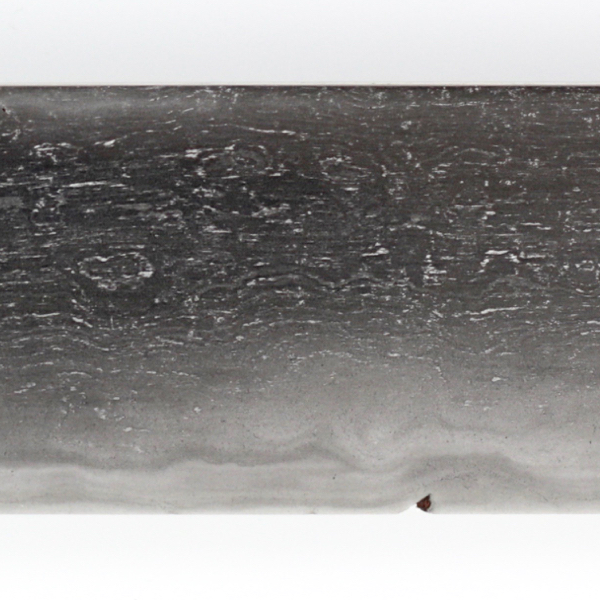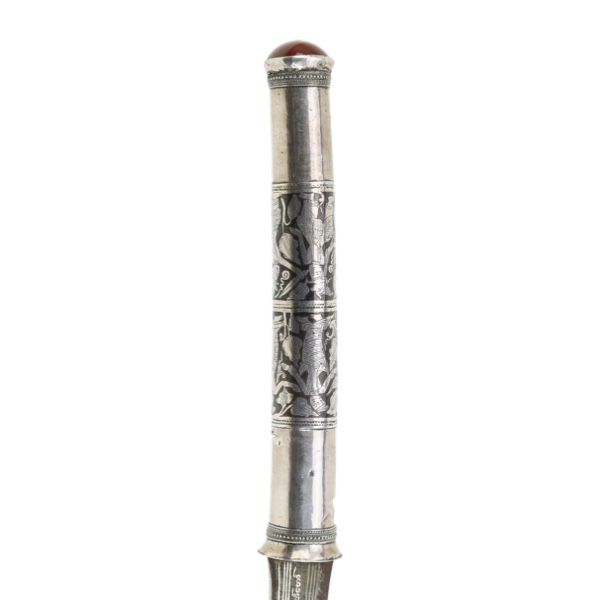
Mindan dha with agate pommel
Its blade portraying the story of one of the previous lives of Guatama Buddha.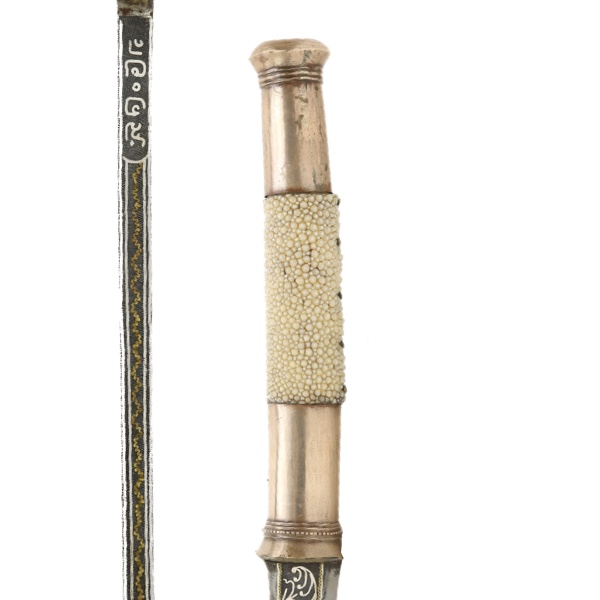
Burmese dha dated 1928
A nice example that can serve as a benchmark to help date others.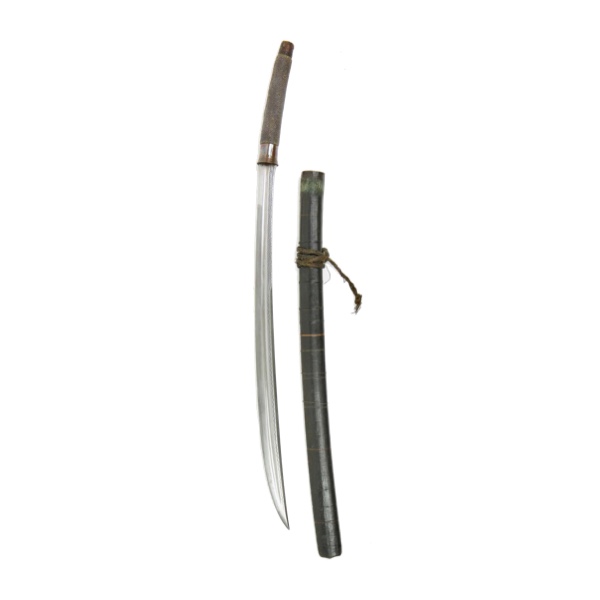
Dha shay
A name for the long Burmese dha.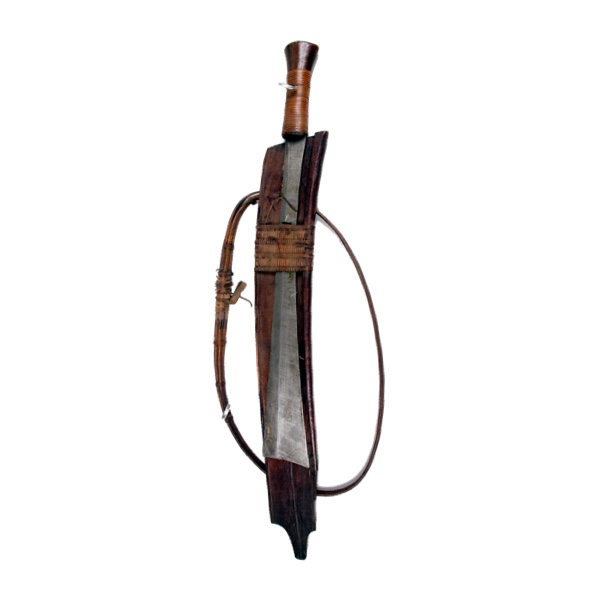
Linkin dha
Colonial British name A type of dha used by various tribes in northern Burma.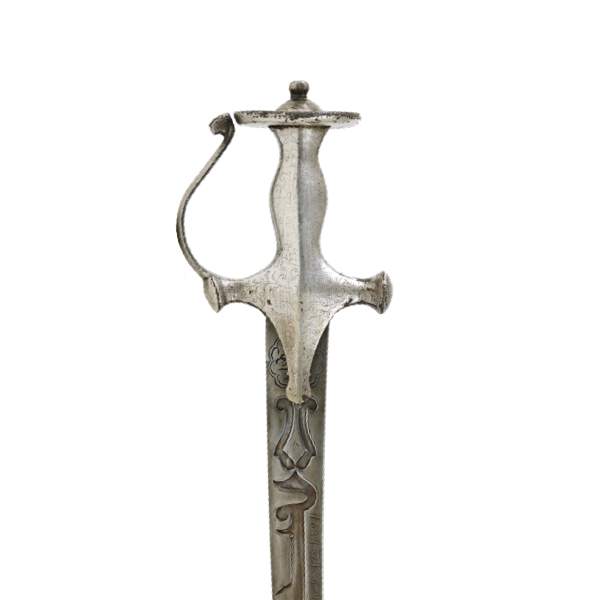
Mamluk style sword in talwar hilt
Chiseled with a rare type of decor on the base, and with two Islamic inscriptions.
Qijiadao in Vince Evans mounts
The 17th-century blade is mounted in fittings designed by Philip Tom and executed by Vince Evans some 20 years ago.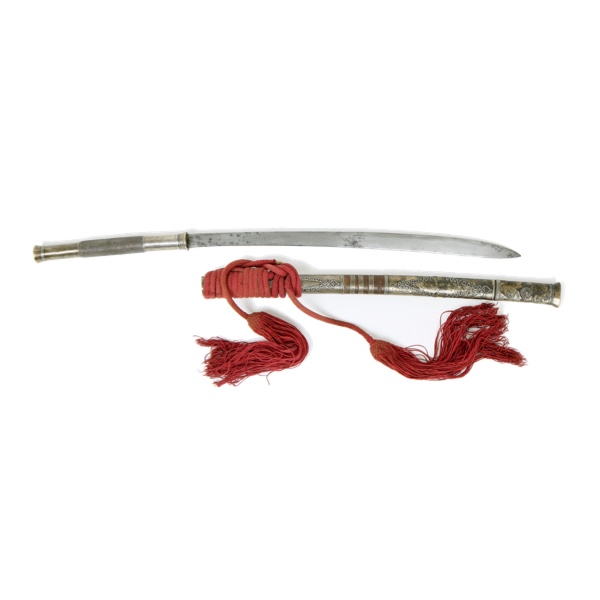
Dha-lwé
Burmese for a type of sword worn slung over the shoulder.
Thanh gươm (劍)
Vietnamese for a ceremonial saber.
Vietnamese officer gươm
With staghorn grip finely carved with plum blossoms.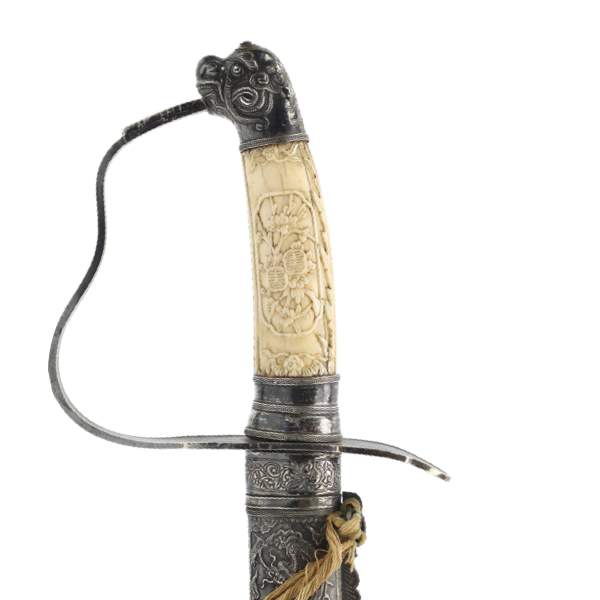
Very fine ceremonial gươm
An outstanding example with very fine silver and moth-of-pearl work.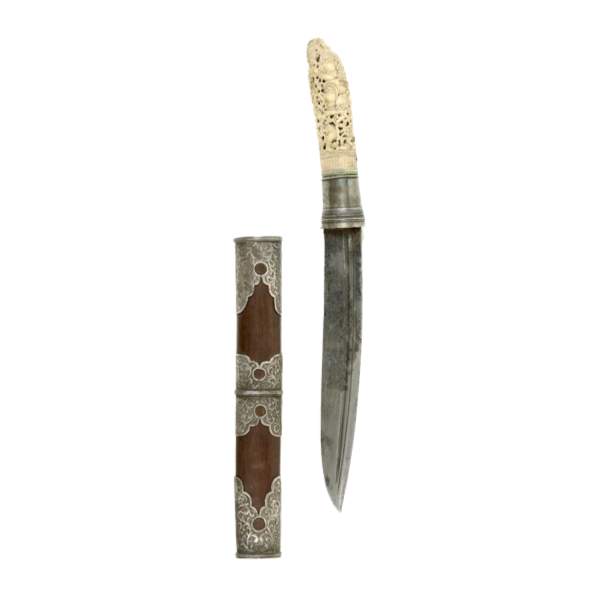
Fine Burmese dha hmyaung
With intricately carved ivory hilt depicting a demon on a horse.
Vietnamese officer's gươm
Of a late 19th century type with a silver-backed hardwood grip.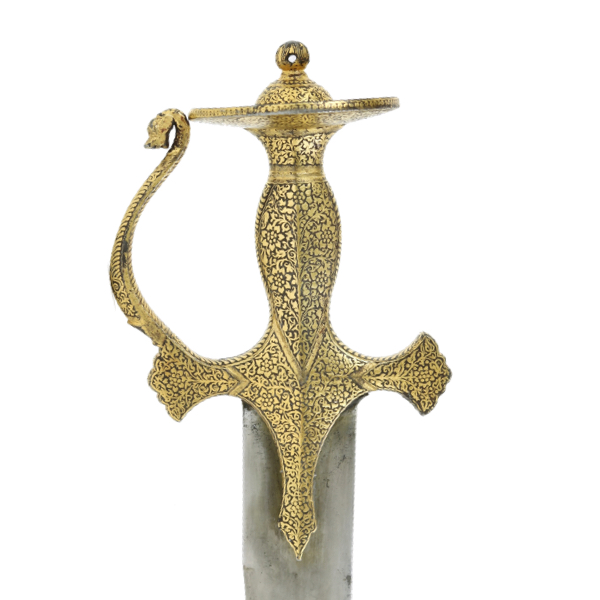
Indian teghá with fine hilt
With wide, pattern-welded blade.
Teghá (तेग)
A type of Indian saber with a broad blade.
Gươm (鎌)
The Vietnamese saber.
Gươm truòng (鎌長)
The Vietnamese two-handed saber.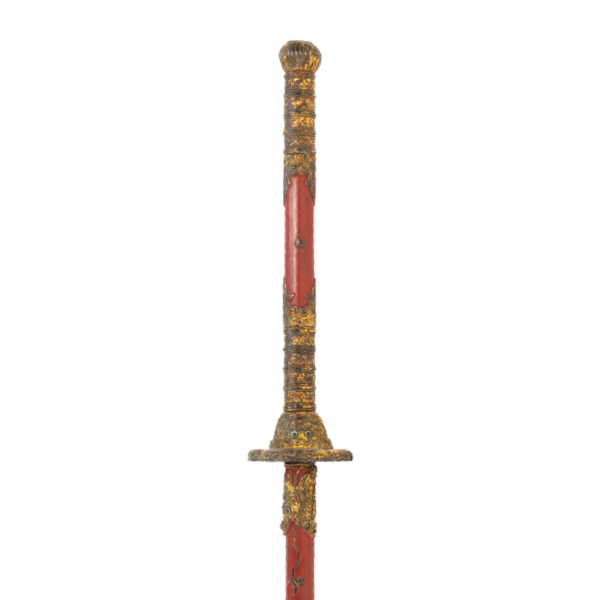
Ceremonial gươm truòng
Of an all-wooden construction, simulating a sheathed long saber.
Zhǎnmǎdāo (斬馬刀)
Literally, "horse cutting blade". The name of various classical Chinese weapons.
Garin
Manchu for "saber guard".
Green Standard Army Zhanmadao
The Green Standard Army Zhanmadao was a large two-handed saber of the Qing dynasty.

A saber glossary in Manchu
An overview of Manchu saber terminology.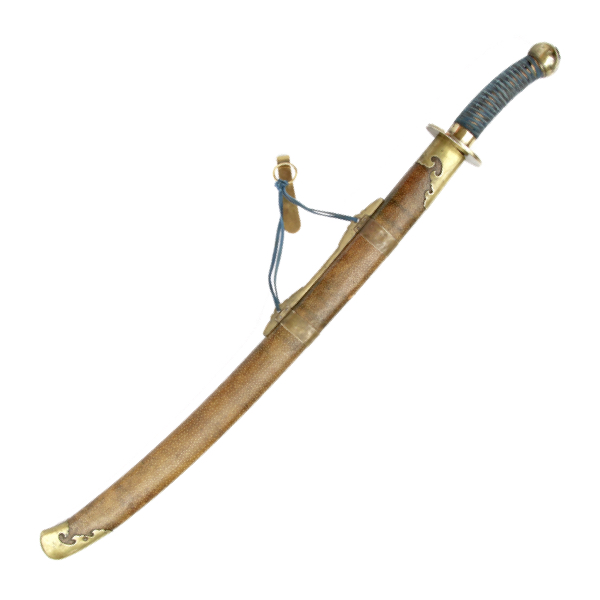
Loho
Manchu word for saber.
Burmese double knives
A rare set of twin knives in a single scabbard.
The Rundle dha of 1898
A signed and dated Burmese dha.
Ivory hilted dha
An earlier example with an iconographic hilt.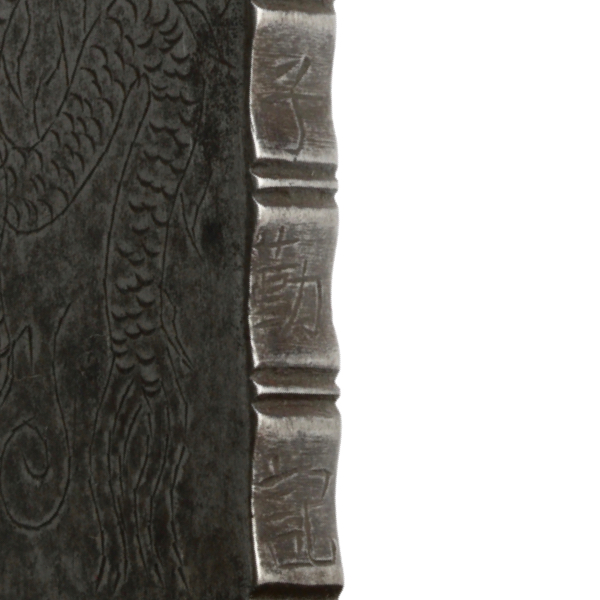
Zi Qín Jì (子勤記)
A Chinese sword maker's shop that was active during the Guangxu period (1875 - 1908).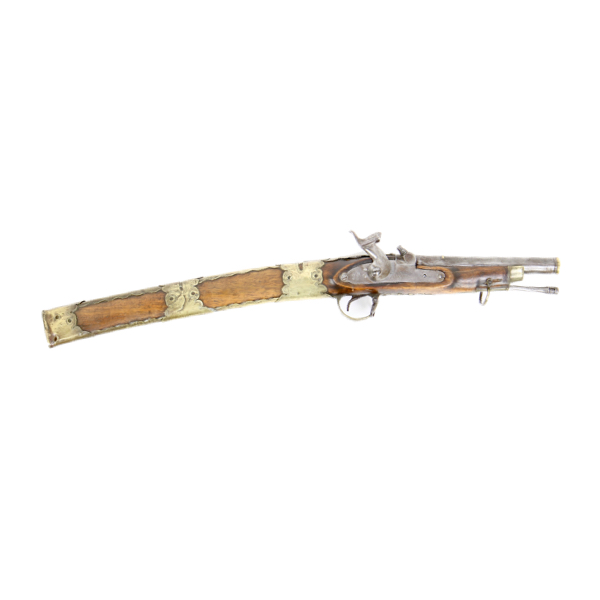
Burmese sword carbine
A rare Burmese weapon combining a percussion carbine with a short sword.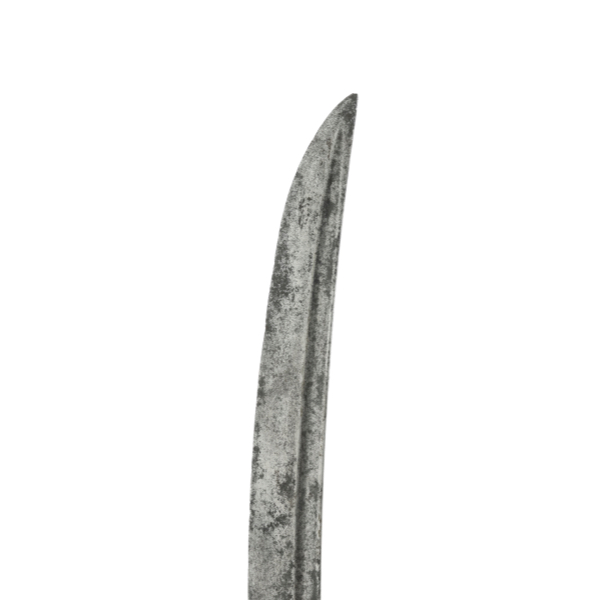
Thuda
Sinhala for the point of a sword blade.
Agissa
Sinhala term for the edge on a sword blade.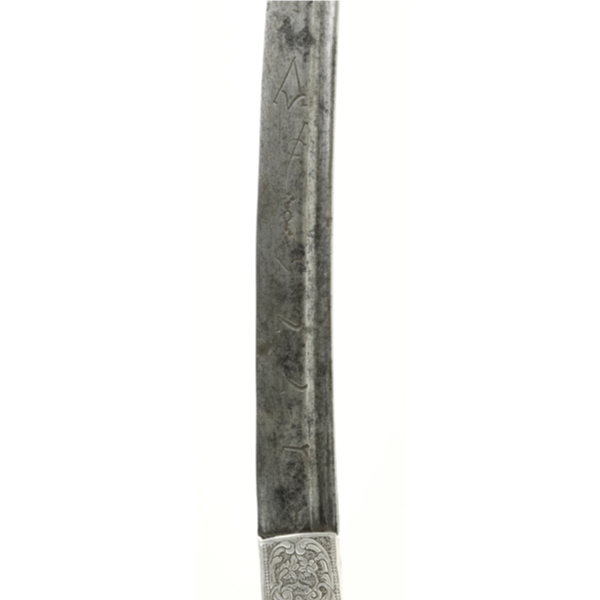
Peeli
Sinhala for grooves on a blade. (Fullers).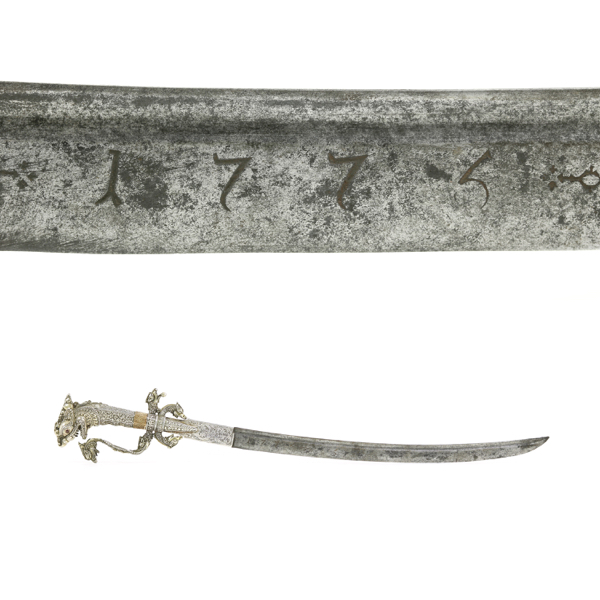
Isa
Sinhala for "blade".
Kadu patha
Sinhala for "blade".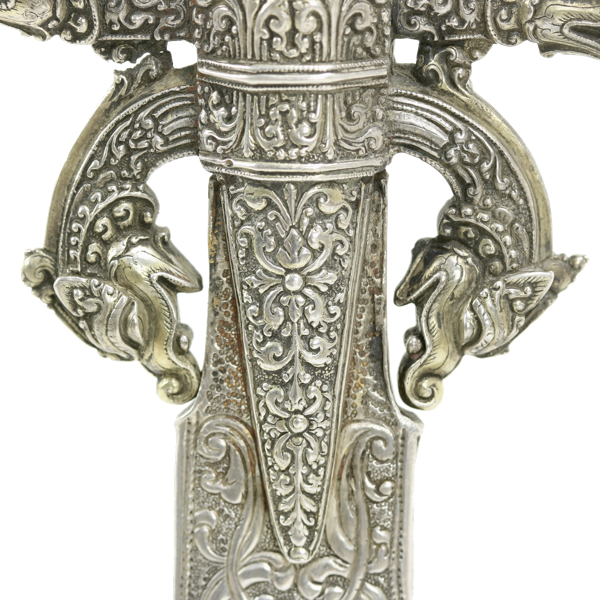
Alluva
Sinhala for side plates on a sword.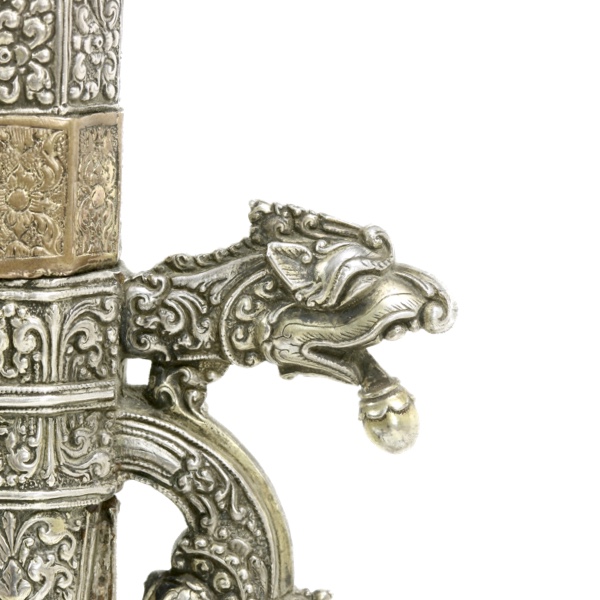
Sérapéṅdiya mūna
Sinhala for the head of a mythical bird. Often used as sword ornament.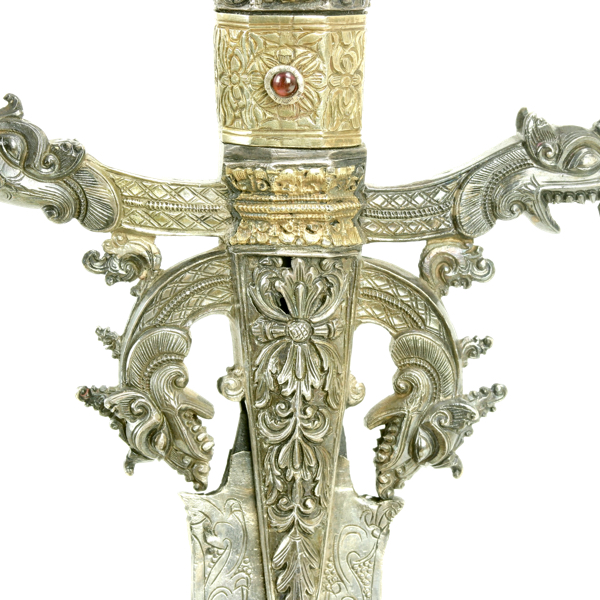
Vari sārkawa
Sinhala for the quillons on a Sinhalese sword.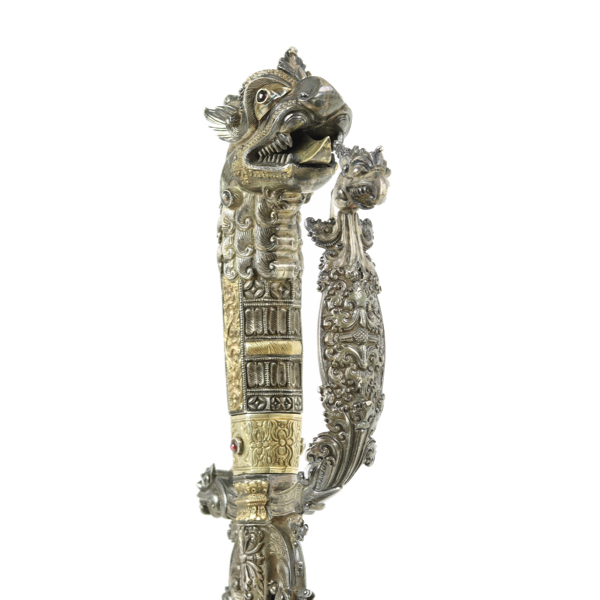
Ath häde
Sinhala for "knuckle guard".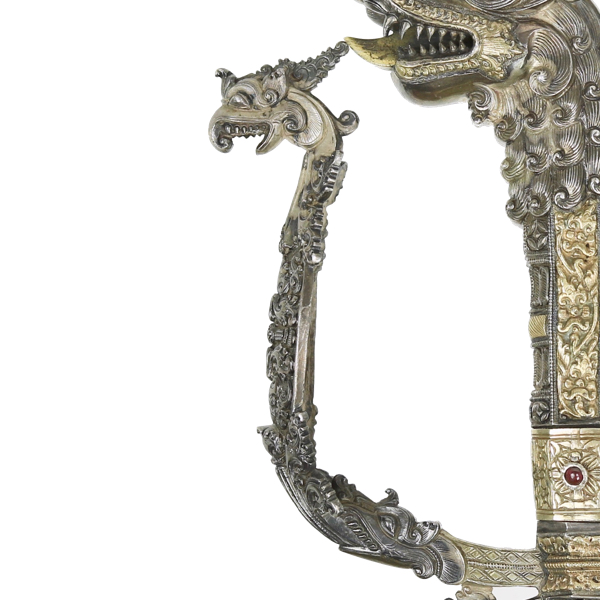
Ath väsma
Sinhala term given by Deraniyagala for "knuckle guard".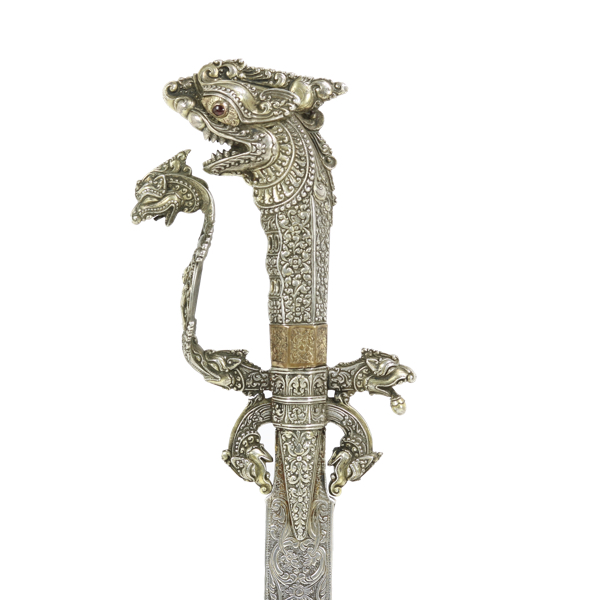
Siṃha mūnu mitta
Sinhala for "lion-faced hilt"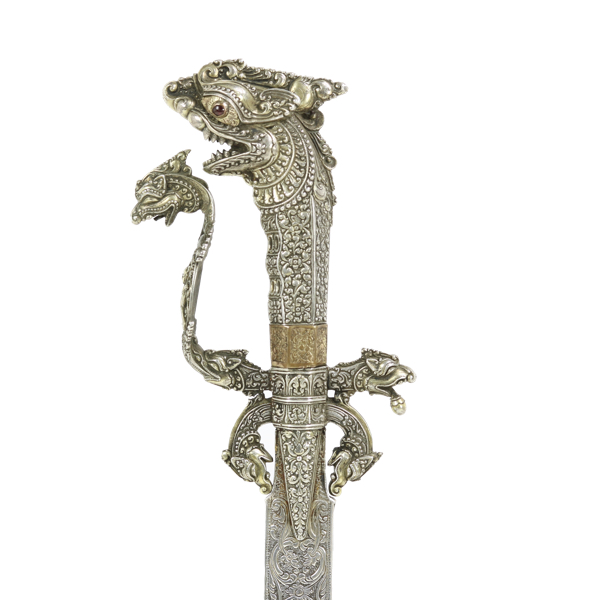
Mitta
Sinhala for "hilt".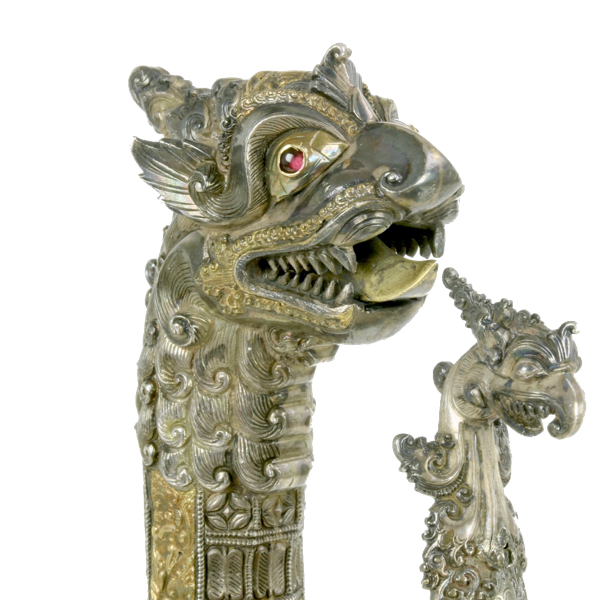
Gediya
Sinhala for "pommel".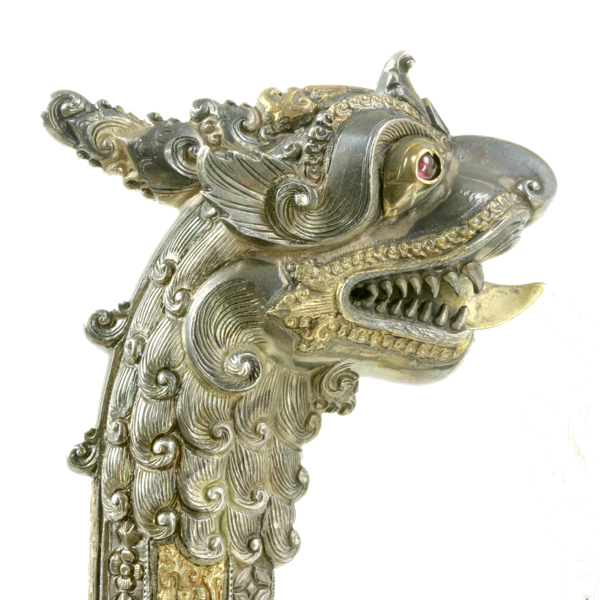
Siṃha
Sinhalese for "lion". The national symbol of the Sinhalese people.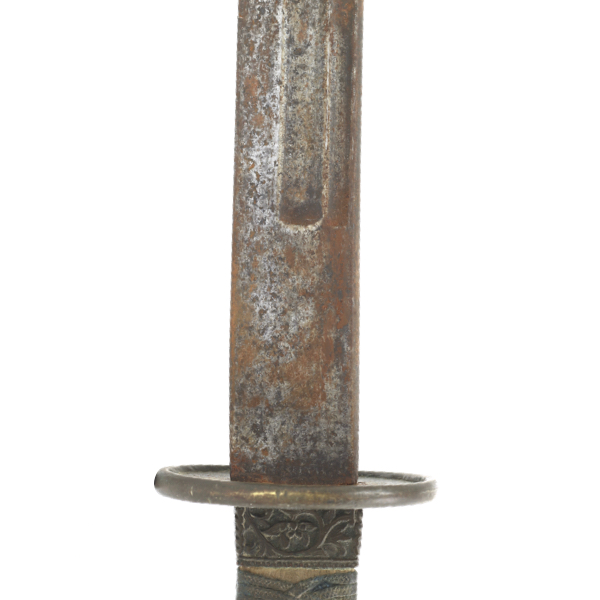
Dāo shàng xiù (刀上鏥)
Language: Mandarin Chinese
Source: Classical literature
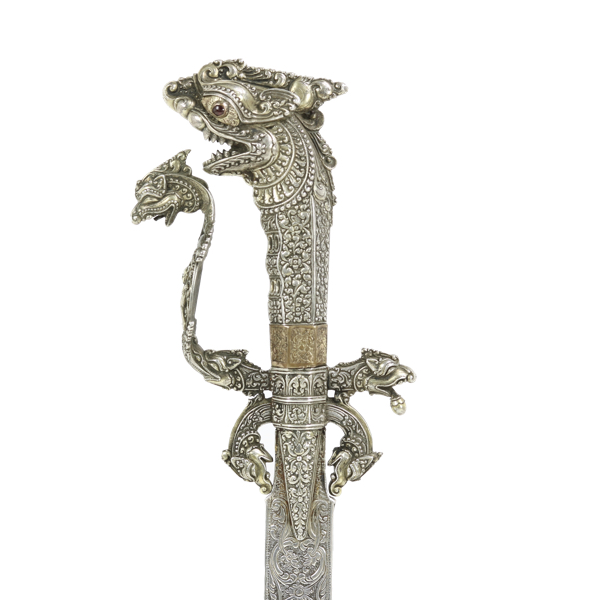
Sinhalese kasthāné dated 1776
A very fine specimen with VOC blade and ruby-set scabbard.
Dāo bèi (刀背)
Qing Chinese for the back of a blade.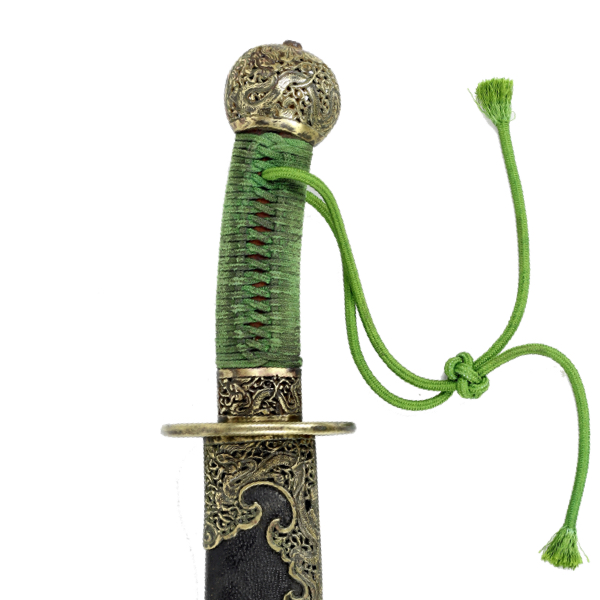
Yāodāo xìzi (腰刀繫子)
Qing Chinese for saber lanyard.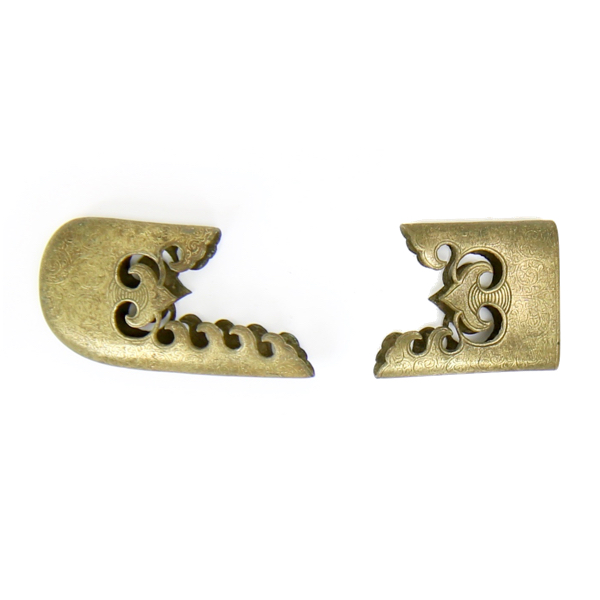
Dāoqiào dǐshù (刀鞘底束)
Qing Chinese for the two mounts on either end of a saber scabbard.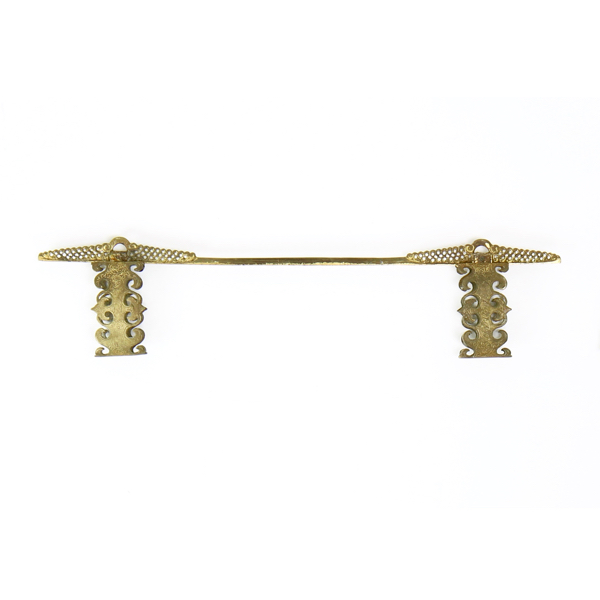
Dāo shù liáng (刀束樑)
Language: Mandarin Chinese
Source: Classical literature
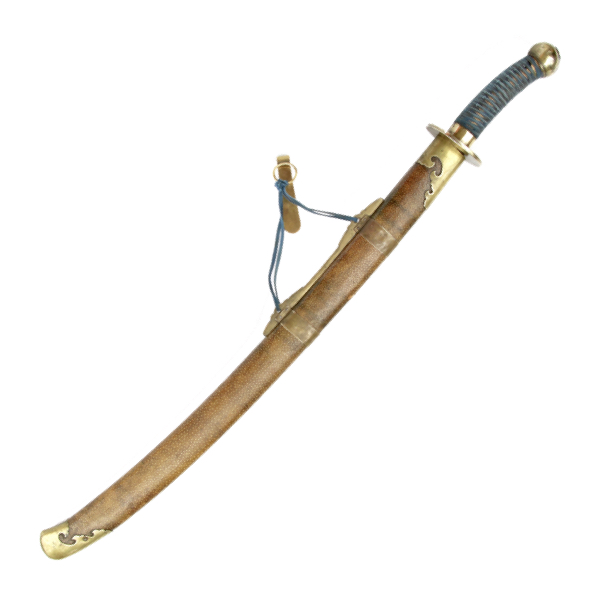
Yāodāo (腰刀)
Literally "waist saber", the standard military saber of the Qing.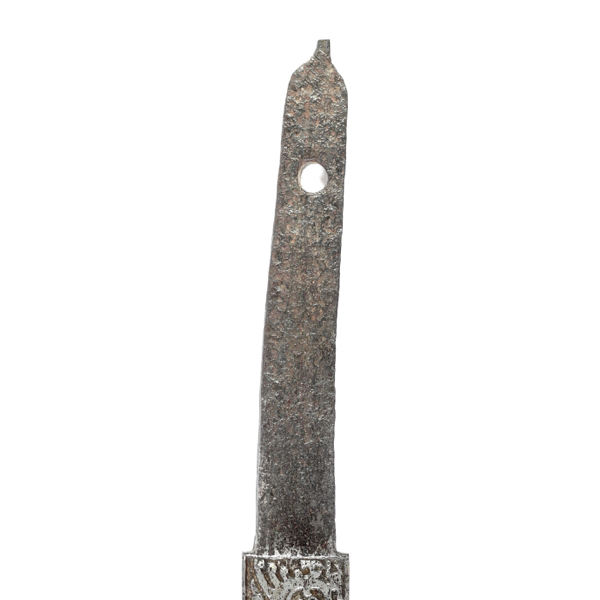
Sǔn (榫)
Language: Mandarin Chinese
Source: Classical literature
